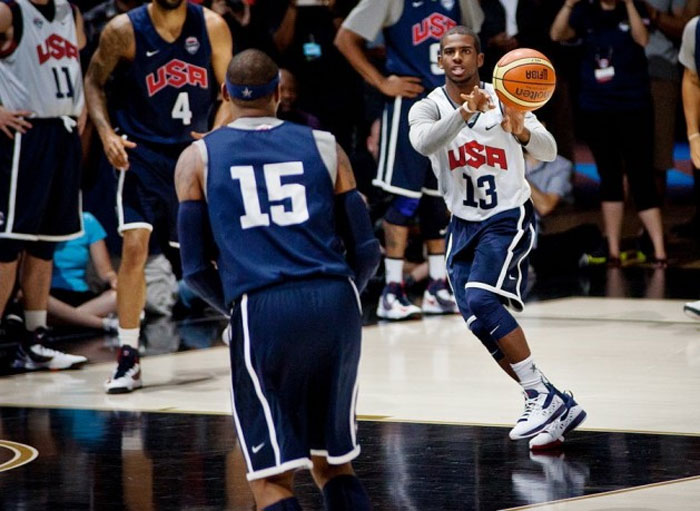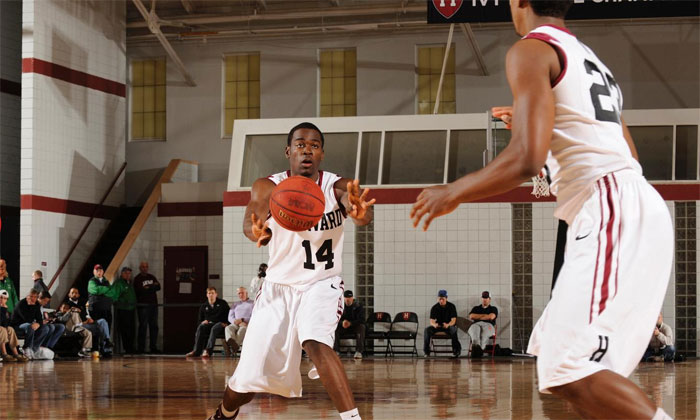You must hear the word “travel” quite often, but how often have you heard it in the context of basketball?
Not so often, we bet, and if you’re a beginner, you might not have heard about it at all. What we’ve done here is make a simple and easy-to-follow guide on the regulations concerning travel.
You will learn what travel is in basketball and how to apply the traveling rules in the game. If you are a spectator who wants to better understand what’s happening during a game, or if you are a rookie looking to become a better player - this guide is for you. Let’s get down to it.
Dribbling
To understand traveling, one must first understand dribbling. Dribbling is one of the basic rules of the game.

Almost everyone knows that in basketball, the rules forbid you from grabbing the ball and running - instead, you must dribble the ball to move.
Of course, it would be physically impossible not to move at all except when dribbling, so the rules allow some movement.
A player can therefore make a maximum of two steps between dribbles. The breaking of this two-step rule is what the rules of basketball call traveling.
Traveling
Traveling in basketball refers to a violation of particular rules concerning the ball and its holder’s movements.
As we mentioned earlier, to move during a basketball game means to dribble. Naturally, you might think that holding the ball and making movements violates the rules, but this is not always the case.
In actuality, the rules allow some movement without dribbling the ball. To utilize these movements requires a deep understanding of the regulations concerning travel.
Otherwise, this action will be considered invalid, resulting in a turnover, meaning the opposing team getting the ball.
This article presents four situations where we thoroughly explain what “traveling,” in basketball terminology, is all about. Of course, we will also provide you with tips on how not to break this rule.
Receiving the Ball While on the Move
Imagine this: you are on the move and about to get the ball from another player.
You have your eyes on the basket, and you receive the ball while one of your feet is on the ground. You take two additional steps while holding the ball, jump, and score. A point for your team, right?
Not so fast. Your point is annulled, and the other team gets the ball. “What happened here?” you might ask yourself. This scenario is a typical case of traveling. Let’s rewind once more.

If you already have one foot on the ground and receive the ball while moving, you can only take one additional step without dribbling the ball. After this extra step, you have to release the ball to avoid traveling.
How can this be, you might be wondering; after all, even this article mentions that you can take two steps before dribbling. Well, this is true, but with a slight twist: the fact that you already had one foot on the court counts as the first step.
This rule also applies if you catch the ball while in the air. If you land on one foot, that would also count as the first step, and you would be allowed to take only one additional step before attempting a shot or passing the ball.
It might all sound a little complicated, but it won't take you much time to figure this out and apply it in practice.
Receiving the Ball While Stationary
In our second imaginary scenario, you are standing on the court; both feet planted firmly on the ground. You receive the ball but don’t want to dribble - what do you do next? What you can do is choose one foot to pivot around.
The foot you choose to rotate around is called your “pivot foot” for all the beginners out there.
In our proposed scenario, as the player, you would be allowed to move one foot around, as long as that movement is in rotation, with the other foot acting as a pivot point.

Imagine a ballerina doing the pirouette movement, standing on one leg and rotating around it. It’s an extreme example, but it shows precisely the type of movement the basketball rules allow.
When you pivot around one of your feet, you can move without dribbling the ball. You can observe your opponents’ movements and find out the location of your teammates. It allows you a moment to consider your next move - passing the ball or making a shot.
We have to mention that having your pivot foot glued to the ground is mandatory. If you decide to move the foot from its original position, you would be called out for traveling and penalized with a turnover to the opposing team.
And by the way, when we say glued, we mean it - the rule also forbids dragging your foot along the court.
A particular situation is where you simultaneously land on both feet on your second step while moving with the ball. In this case, the rules do not allow any foot movement whatsoever.
Remember to keep your feet ideally planted on the court, then choose between a shot and a pass to one of your teammates.
Traveling While Dribbling the Ball
So you’ve chosen your pivot foot, rotated around it a couple of times, looking for a suitable pass. But none of your teammates are free, and you must continue the play.
Everyone who knows anything about basketball is familiar with the term dribbling, and this is precisely where the role of dribbling comes into play.
The most important part of the rule here is that you start dribbling first before moving your feet. Only after you’ve begun to dribble can you begin to move the foot that used to be your pivot.
Needless to say, if you decide to move your pivot foot before dribbling the ball - you will lose the ball for traveling.

Photo Credit: Jack Kapenstein
Remember that you cannot lift your pivot foot off the ground if you have not released the ball from your hands.
There is one slight exception to this rule - if you aim for the basket, then and only then are you allowed to lift your pivot foot before releasing the ball from your hands.
The trick here, though, is that you're obliged to make a shot after lifting your pivot foot. If you land and the ball is still in your hands - you’re traveling.
This particular maneuver is probably among the harder ones to apply in practice. It will take some time for your brain to learn to process all of these rules, but it becomes second nature once you get the hang of it. You won’t even have to think about it - like riding a bike.
Receiving the Ball and Falling
What if, while in action, you fall flat on the floor with the ball in your hands? How do you proceed? Your instinct might tell you to roll around or rise to your feet.
Unfortunately, regulations do not care for intuition. The rules call for you to pass the ball, and doing anything else will result in a turnover - and losing the ball.
Conclusion: Travel in Basketball
Proper understanding of the rules of traveling is fundamental, and knowing these rules will make you a better player and a more informed spectator.
Our advice is to observe experienced players carefully and continuously while practicing proper dribbling if you are a beginner.
If you do this, your body and mind will quickly adapt to following the rules of dribbling and traveling.
Since the visual component is of great importance in basketball, we’ve included this excellent video to help you understand the topic at hand.
Thanks to these strict and precise rules, basketball is a fun, honest, and exciting game.
We hope that this guide will expand your knowledge of the rule of traveling and will make you even more motivated to pick up the ball and train.
While reading can be helpful, the only way to truly experience the meaning and practical application of all these regulations is to go out on the court and play a game with your friends.
